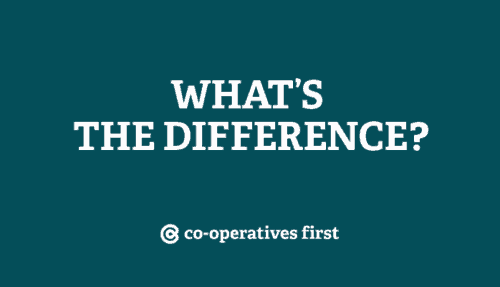Community service co-ops vs. non-profit corporations
Choosing the business model for a venture, even a non-profit one, should be based on practical reasons. But, spotting the difference between models is not always easy, and making the wrong choice could negatively impact how the organization performs later on.
Community service co-ops (which are non-profit) and non-profit corporations are a good example of this challenge. We were recently asked about the difference between the two, and thought it might help others to share our answer here.
So, what IS the difference between a community service co-op and a non-profit?
This is a fair question. Not much on the surface really. Many community service co-operatives share a structure comparable to the non-profit corporate model, including handling of profit, taxation and the process for dissolution.
Outside of some legislative peculiarities, there are 2 important practical distinctions between these two organizational structures.
Membership participation
Both non-profit corporations and community service co-operatives are owned and controlled by members – a term used in practice as well as in legislation. But the meaning of this membership is (usually) quite different.
Most community service co-ops deliver specifically to their membership. This membership is designed to encourage active participation and use of service. For the OGO Car Share Co-operative in Kelowna, members join the co-op to use the cars; and, for the Minnedosa Fitness Co-op, members join to access fitness facilities. As you can see, a sense of ownership and active member participation is vital to the success of these organizations.
In contrast, membership in a non-profit corporation is generally not as central to the operational purpose of the organization. Often this is because the longevity of the organization is more dependent on its mandate – such as, ending hunger or finding a cure for cancer – than member participation and use of service.
Voting Rights
Co-operatives and community service co-ops are based on the premise of one member, one vote. This equitable governance structure is required by legislation and is one of the key distinguishing factors separating co-operatives from other business models.
While many non-profits also conduct voting on a one member, one vote basis, this is not required. Non-profits can create unique voting structures based on membership type, funding contributions, or other factors that make sense for the organization. For non-profits, an equitable decision-making structure is not built into the legislation regulating use of the business model. For co-ops, it is.
This difference might seem unnecessarily subtle, but in practice it can have serious impacts on governance – especially over time and as founders move on. It can also impact funding options and how a board is able to manage mission drift.
Making the decision can impact organizational health
When forming a non-profit organization, we suggest considering these two factors when choosing a business model. Selecting an appropriate business model will help set your organization up for success well into the future.
On the other hand, choosing the wrong model, especially if the decision is not based on practical reasons, could set the organization up for distracting, unnecessary and potentially detrimental conflicts or challenges.
If you’re considering community service co-ops as a fit for your business idea, and could use some support, contact us. Or head to our Co-op Creator tool to get started.

 Written by
Written by 



